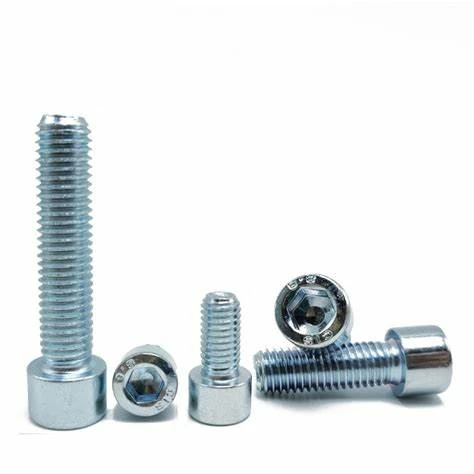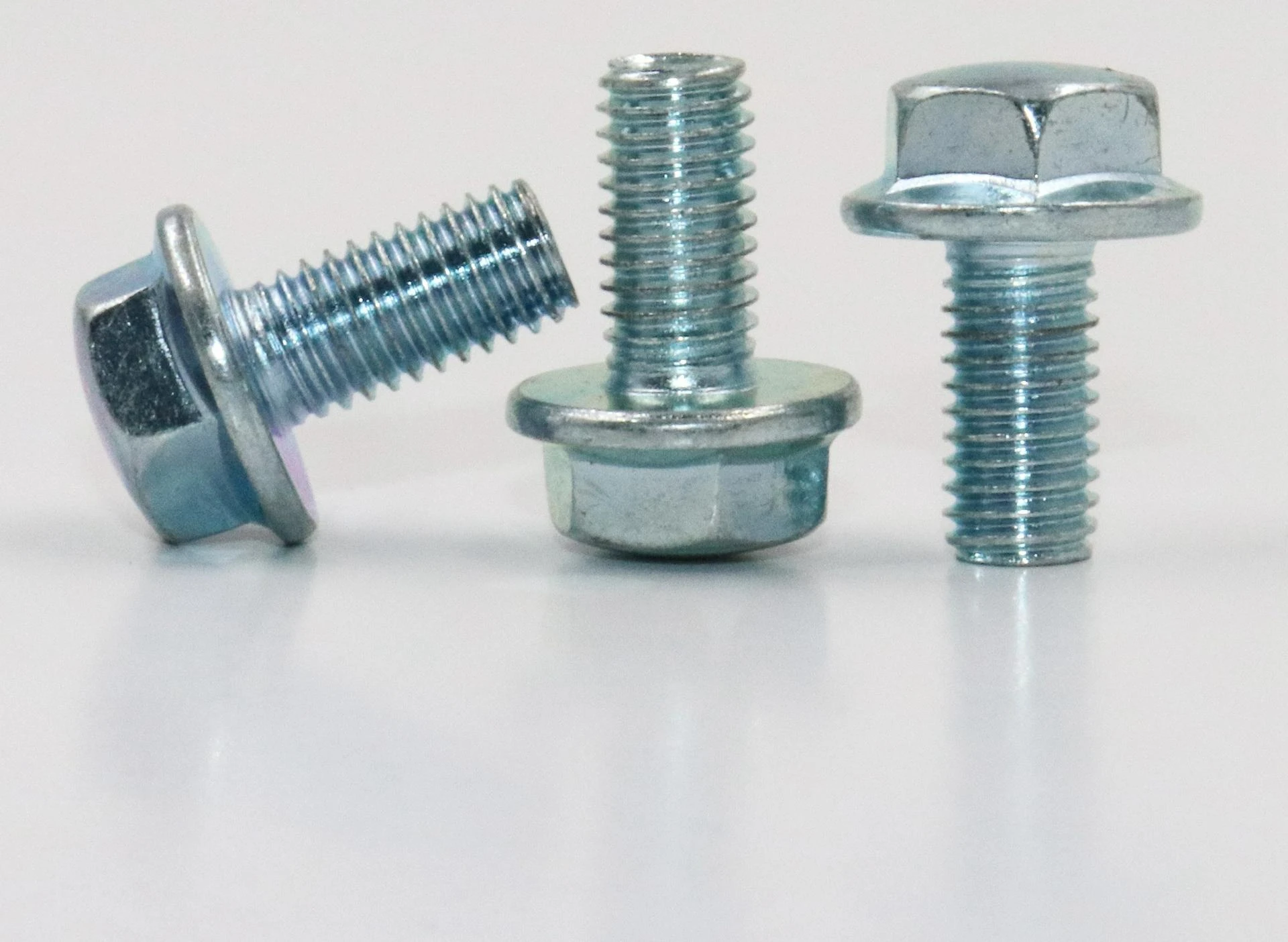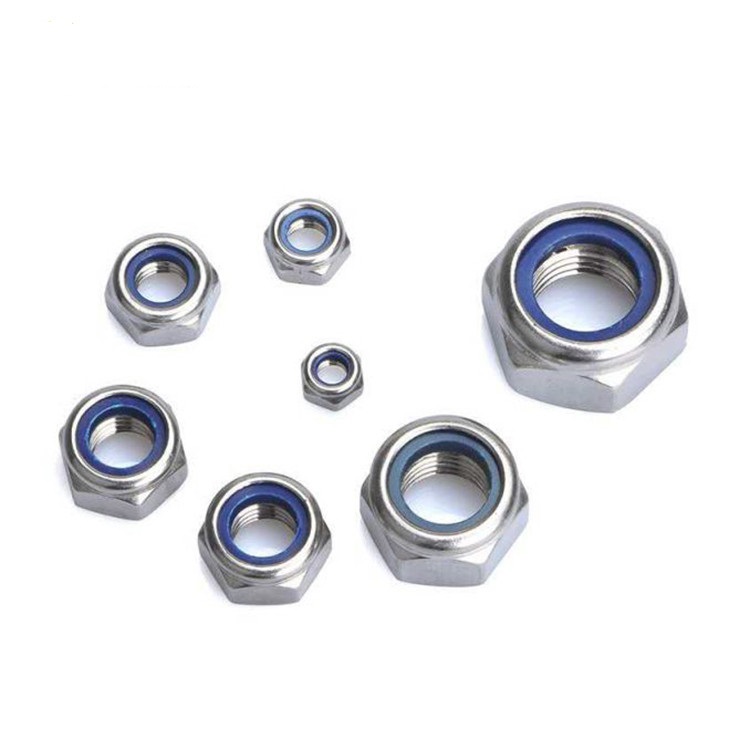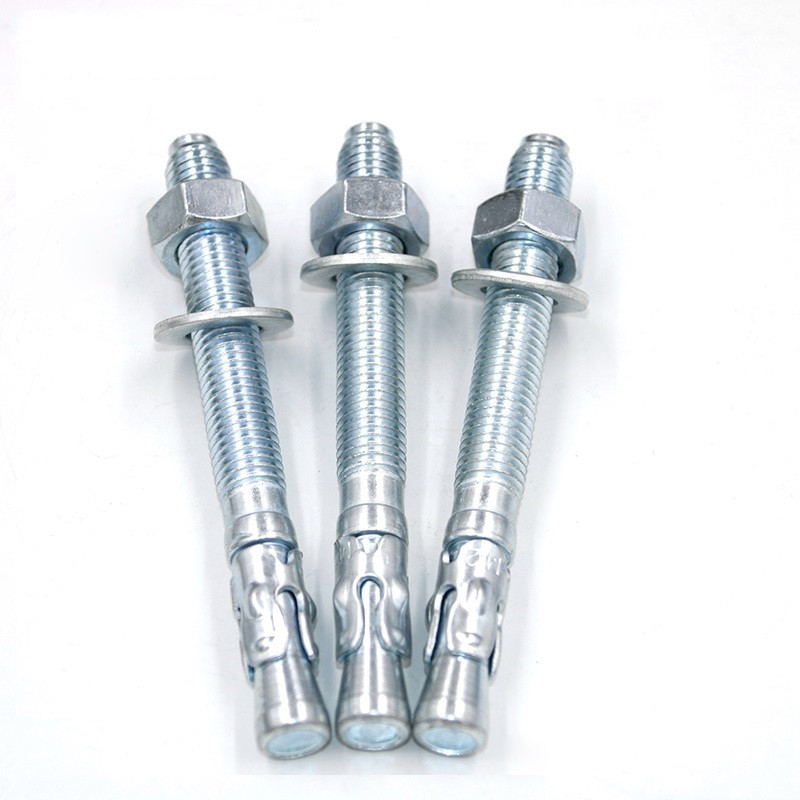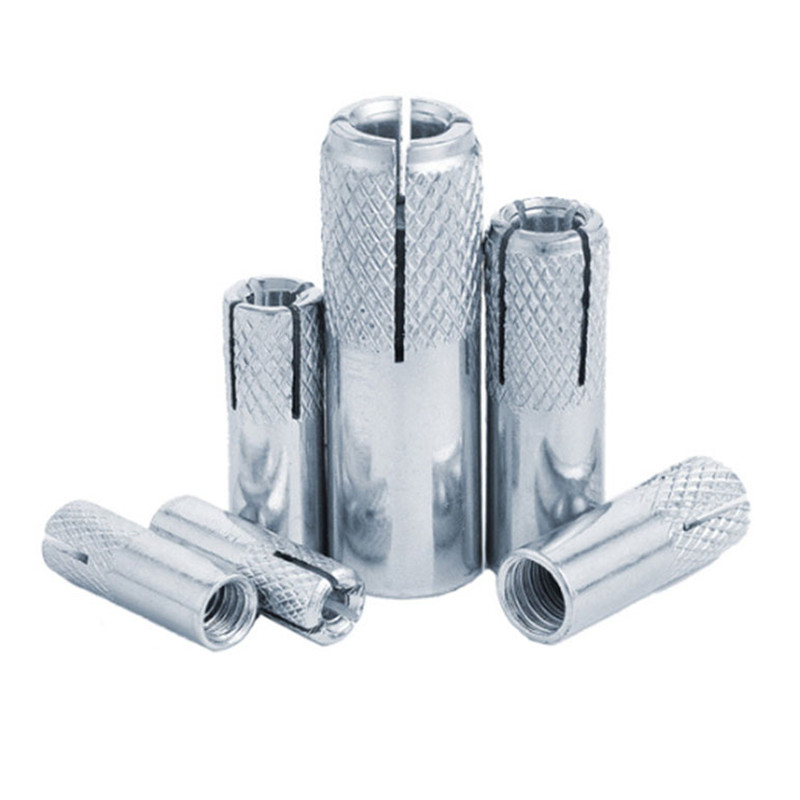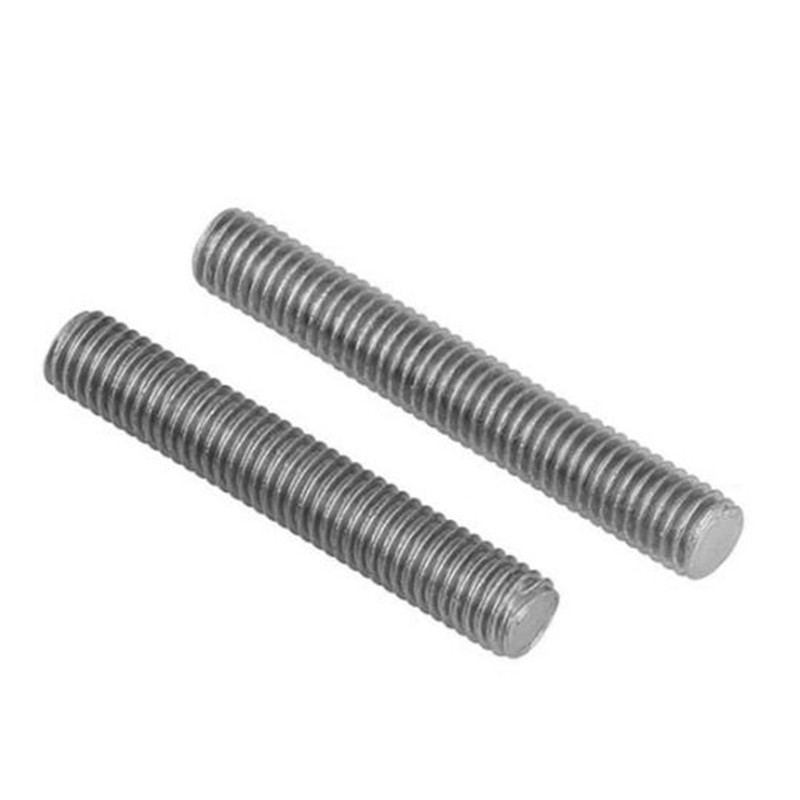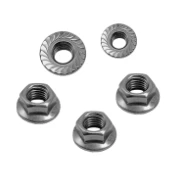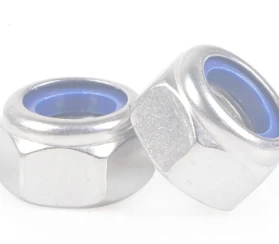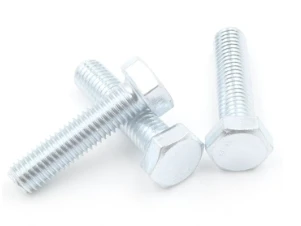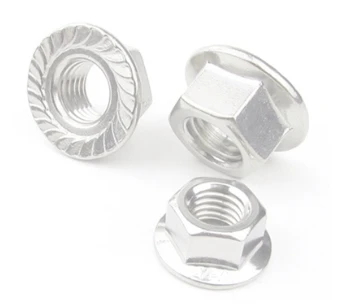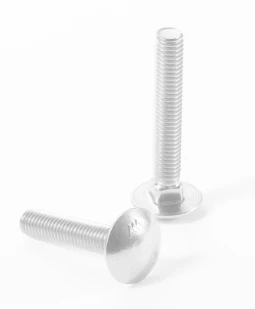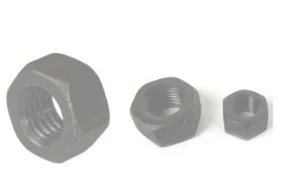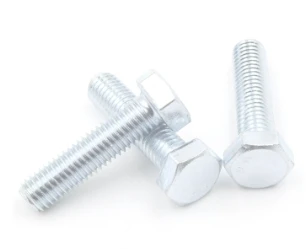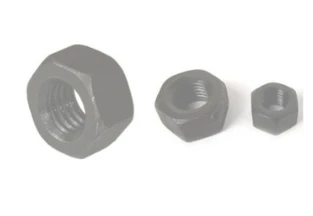In the world of mechanical fastening, stability, reliability, and efficiency are paramount. The hex flange nut stands out as a superior solution, combining the functions of a standard hex nut and a washer into a single, high-performance component. This comprehensive guide delves into the technical intricacies, manufacturing excellence, and diverse applications of the DIN6923 Hex Flange Nut, providing you with the expert knowledge needed to make informed engineering decisions.

Industry Trends: The Rising Demand for High-Integrity Fasteners
The global industrial fastener market is projected to grow significantly, driven by advancements in key sectors. Modern engineering, from electric vehicle (EV) battery packs to colossal wind turbines and automated manufacturing lines, demands fasteners that do more than just hold things together. They must resist vibration, distribute load effectively, and endure harsh environmental conditions. The hex flange nut, particularly the serrated variant, directly addresses these challenges, leading to its increased adoption. Market data shows a clear trend towards integrated fastening solutions that reduce assembly time and potential points of failure, a niche where the flange nut excels.
Projected Growth in Flange Nut Demand by Sector (2024-2028)
Technical Parameters Unveiled: Understanding the Specifications
A deep understanding of a component's technical data is crucial for any engineer. The hex flange nut is defined by precise dimensions and material properties, standardized to ensure interchangeability and performance. The most widely recognized standard is DIN 6923, which is technically equivalent to ISO 4161. Below is a detailed parameter table for some of the most common sizes, including the popular m6 flange nut, and imperial sizes like the 1 2 13 flange nut and 5 16 24 flange nut.
Comprehensive Specification Table for Hex Flange Nuts
| Nominal Size (d) | Pitch (P) mm / TPI | Width Across Flats (s) | Total Height (m) | Flange Diameter (dc) | Standard |
|---|---|---|---|---|---|
| M6 flange nut | 1.00 mm | 10.0 mm | 6.0 mm | 14.2 mm | DIN 6923 / ISO 4161 |
| M8 | 1.25 mm | 13.0 mm | 8.0 mm | 18.0 mm | DIN 6923 / ISO 4161 |
| M10 | 1.50 mm | 15.0 mm | 10.0 mm | 21.8 mm | DIN 6923 / ISO 4161 |
| M12 | 1.75 mm | 18.0 mm | 12.0 mm | 26.0 mm | DIN 6923 / ISO 4161 |
| 5/16"-24 flange nut | 24 TPI (UNF) | 0.500 in (12.7 mm) | 0.328 in (8.3 mm) | 0.688 in (17.5 mm) | ASME B18.2.2 |
| 1/2"-13 flange nut | 13 TPI (UNC) | 0.750 in (19.1 mm) | 0.516 in (13.1 mm) | 1.063 in (27.0 mm) | ASME B18.2.2 |
Note on m6 flange nut dimensions: The combination of a 10mm wrench size and a 14.2mm flange diameter makes it ideal for applications where space is limited but a good load distribution is still required, such as in electronics enclosures and automotive interior fittings.
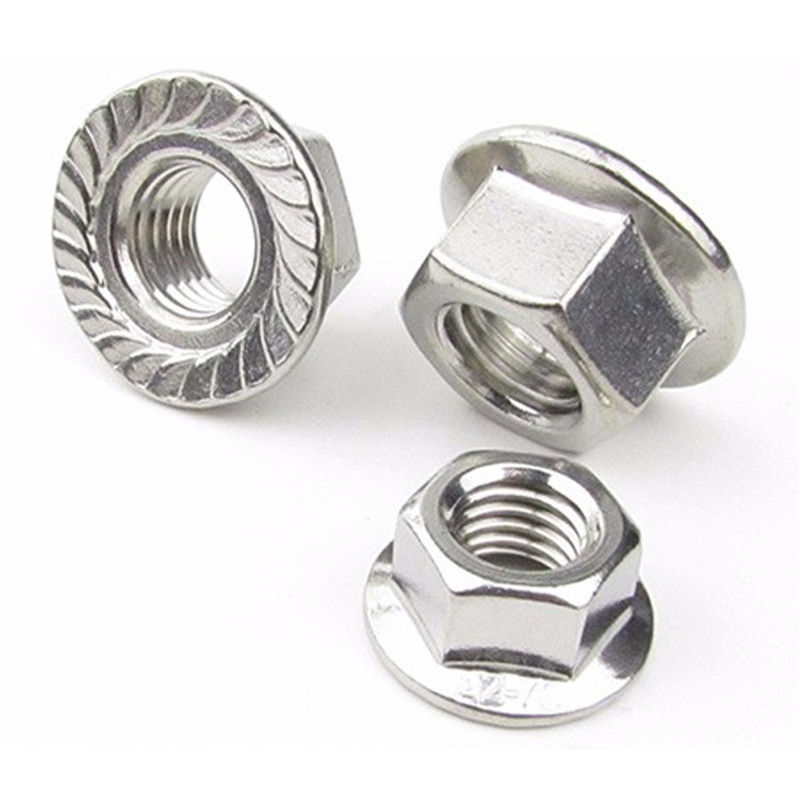
From Raw Steel to Flawless Fastener: Our Manufacturing Process
The quality of a hex flange nut is a direct result of a meticulously controlled manufacturing process. At Hebei Tainuo, we adhere to a stringent, ISO 9001:2015 certified production workflow to guarantee that every nut meets and exceeds industry standards.
Raw Material Inspection
(High-Grade Carbon & Stainless Steel)
Cold Forging
(Precision shaping for strength & consistency)
Thread Tapping
(High-speed, precise internal threading)
Heat Treatment
(Quenching & tempering to achieve Class 8/10)
Surface Finishing
(Zinc, HDG, Dacromet for corrosion resistance)
Quality Control
(Dimensional, torque, and material checks)
Key Process Highlights:
- Material Selection: We utilize high-tensile carbon steel (conforming to Property Class 8, 10, and 12) for strength-critical applications and stainless steel (A2/304, A4/316) for superior corrosion resistance in marine or chemical environments.
- Manufacturing Technology: Our primary method is Cold Forging, a process that shapes the metal at room temperature. This enhances the material's grain structure, resulting in a stronger, more durable final product compared to machined or cast alternatives. For larger dimensions or special alloys, Hot Forging and precision CNC Machining are employed.
- Testing & Standards: Every batch undergoes rigorous testing. This includes dimensional verification against DIN 6923 / ISO 4161 specs, proof load testing as per ISO 898-2, and salt spray testing (ASTM B117) to validate the lifespan of our coatings.
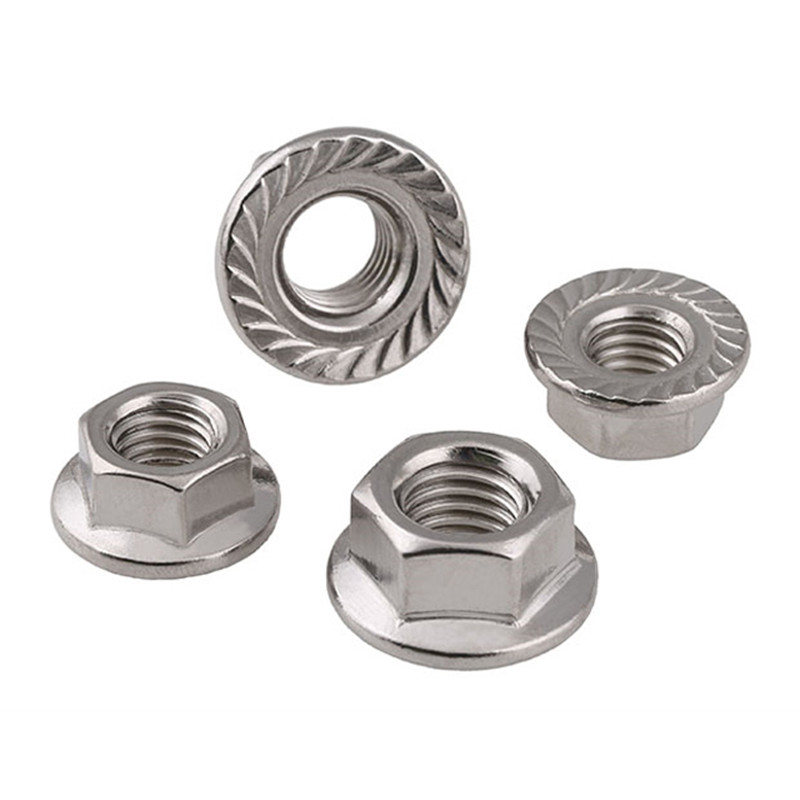
Technical Advantages & Application Scenarios
The integrated flange is the defining feature of a hex flange nut, and it provides several key advantages over a traditional nut and washer combination.
Vibration Resistance
The optional serrations under the flange bite into the mating surface upon tightening, creating a powerful locking mechanism that resists loosening under heavy vibration. This is critical in automotive engines, industrial machinery, and structural steel connections.
Load Distribution
The wide flange distributes the clamping force over a larger surface area. This reduces the risk of crushing the mating material, making it ideal for use on soft materials like aluminum, plastic, or on oversized or slotted holes.
Assembly Efficiency
By combining the nut and washer into one part, assembly time is significantly reduced. This one-piece design simplifies logistics, inventory management, and eliminates the common error of a forgotten washer, boosting productivity on assembly lines.
Application Spotlight by Industry:
Hex Flange Nut Market Share by Application
- Petrochemical & Metallurgy: Stainless steel 316 hex flange nuts provide exceptional resistance to corrosion from chemicals and high temperatures found in pipelines and processing equipment.
- Automotive: Used extensively in frame assembly, engine mounting, and suspension systems where vibration resistance is non-negotiable. The m6 flange nut is a staple in vehicle interiors and electronic module mounting.
- Water Supply & Drainage: Hot-Dip Galvanized (HDG) flange nuts offer long-term protection against rust in outdoor and underground infrastructure.
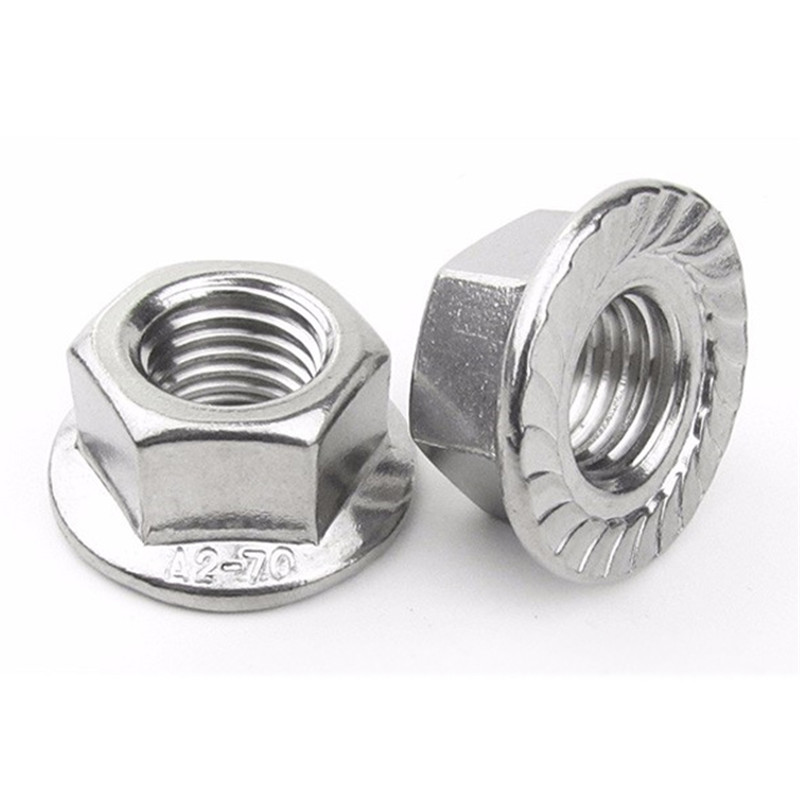
Manufacturer Comparison: Generic vs. TBLS DIN6923 Hex Flange Nut
Not all flange nuts are created equal. Choosing a reputable manufacturer with certified processes is key to ensuring safety and reliability. Here’s how our TBLS DIN6923 Hex Flange Nut compares to generic, non-certified alternatives.
| Feature | Generic Flange Nut | TBLS DIN6923 Hex Flange Nut |
|---|---|---|
| Standard Compliance | Often unspecified or inconsistent. | Guaranteed compliance with DIN 6923 / ISO 4161. |
| Material Traceability | No material certificates, unknown origin. | Full material traceability with EN 10204 3.1 certificates available. |
| Property Class | May be unmarked or fail proof load tests. | Clearly marked and heat-treated to meet or exceed Class 8/10/12 strength. |
| Serration Quality | Inconsistent, dull serrations with poor locking. | Sharp, uniformly forged serrations for maximum anti-vibration performance. |
| Coating Durability | Thin, uneven coating prone to flaking and premature rust. | Controlled thickness Zinc, HDG, or Dacromet coatings for specified corrosion resistance (e.g., 500+ hours salt spray). |
| Quality Assurance | Basic visual check at best. | Multi-point inspection including dimensional, optical sorting, and mechanical property testing. |
Customization Solutions & Engineering Support
Standard parts don't always fit unique challenges. We pride ourselves on being a solutions provider, not just a parts supplier. Our engineering team can work with you to develop a custom hex flange nut tailored to your specific application.
Custom Materials
Need enhanced thermal stability or compatibility with exotic alloys? We can source and manufacture flange nuts from materials like Duplex Stainless Steel, Monel, or Inconel.
Non-Standard Dimensions
If your design requires a specific flange diameter, nut height, or a unique thread pitch (e.g., fine or extra-fine threads), our CNC capabilities can produce parts to your exact drawings.
Specialized Coatings
For extreme environments, we offer advanced coatings like PTFE for low friction, ceramic-filled coatings for high temperatures, or specialized colors for identification purposes.
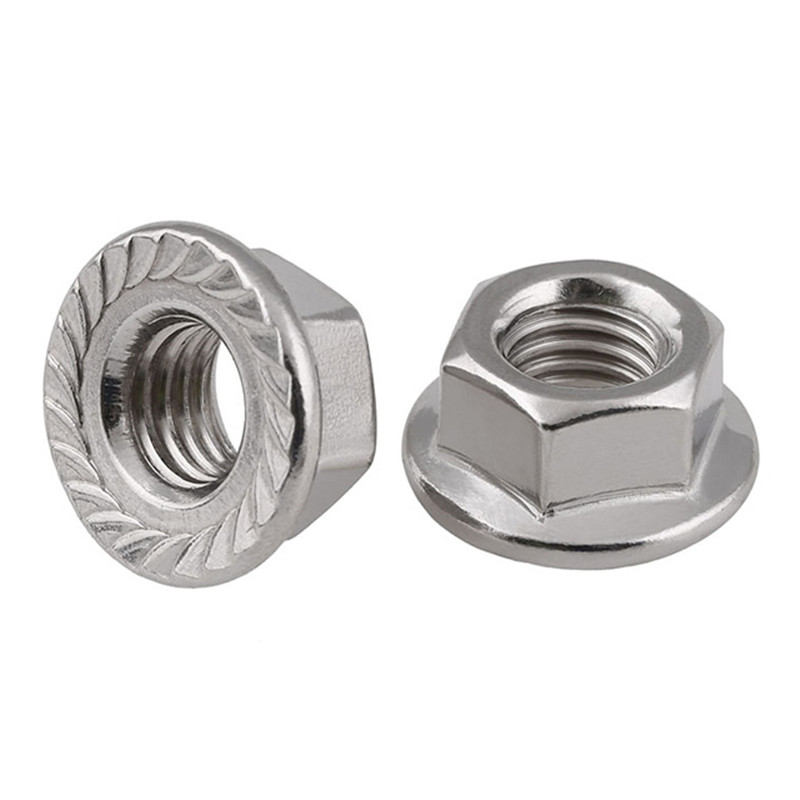
Application Case Study: Enhancing Wind Turbine Safety
"We were facing persistent issues with fastener loosening in our turbine nacelle access panels due to constant, low-frequency vibration. This required costly and frequent re-torquing maintenance cycles. After consulting with the TBLS team, we switched to their Class 10 serrated DIN6923 hex flange nuts. The results were immediate. The serrations provided a reliable mechanical lock, and the integrated flange distributed the load perfectly on the composite panels. We've eliminated the need for manual re-torquing, saving over 200 maintenance hours per year across our fleet and significantly improving the structural safety of our turbines."
Trust & Expertise: Your Questions Answered (FAQ)
Building trust means providing clear, expert answers. Here are responses to some of the most common technical questions about the hex flange nut.
A serrated flange nut has sharp, angled teeth on the underside of the flange. These teeth bite into the mating surface as the nut is tightened, creating a locking mechanism that resists loosening from vibration. It's ideal for dynamic load applications. A non-serrated (or smooth) flange nut provides excellent load distribution without marring the mating surface. It is used when protecting the surface finish is critical or when paired with a separate locking washer.
The choice depends on the application environment and strength requirements.
- Carbon Steel (e.g., Class 8, 10): Choose for high-strength requirements in controlled environments. A surface coating (like Zinc or HDG) is necessary for corrosion protection. It's the most common and cost-effective choice for general construction and machinery.
- Stainless Steel (e.g., 304, 316): Choose for applications exposed to moisture, chemicals, or salt. 304 (A2) is great for general-purpose corrosion resistance (e.g., food processing). 316 (A4) offers superior protection against chlorides and acids, making it essential for marine and chemical plant applications.
The Property Class, defined by standards like ISO 898-2, indicates the mechanical strength of the nut. The number corresponds to the maximum ultimate tensile strength of a bolt that the nut can be paired with. For example, a Class 10 nut has a proof load strength that matches a Class 10.9 bolt. A higher number means a stronger nut. Using a Class 10 nut with a Class 10.9 bolt ensures the bolt will fail before the nut threads strip, which is a critical safety design principle.
It is generally not recommended to reuse a serrated hex flange nut in a critical application. The locking action relies on the sharp serrations deforming the mating surface and themselves slightly. Upon removal and re-tightening, the serrations may be worn, and their ability to provide the original locking force is compromised. For non-critical applications, it may be acceptable, but for any joint involving safety or high vibration, a new nut should always be used.
The correct tightening torque for an M6 flange nut depends on several factors: the property class of the nut and bolt (e.g., 8.8, 10.9), whether the threads are lubricated, and the material of the clamped components. As a general guideline for a dry, Class 8.8 M6 bolt and nut, the torque is typically around 9-10 Nm (Newton-meters). For a Class 10.9, it would be closer to 13-15 Nm. Always consult the specific engineering specifications for your project or use a reliable torque calculator.
DIN (Deutsches Institut für Normung) is the German national standards body, while ISO (International Organization for Standardization) is global. For the hex flange nut, DIN 6923 and ISO 4161 are considered technically equivalent. This means that for all practical purposes, a nut manufactured to either standard will have the same key dimensions (width across flats, height, flange diameter, thread pitch) and can be used interchangeably. ISO 4161 is the more current international standard, but DIN 6923 is still widely referenced and used in the industry.
- Plain Finish (Black Oxide): Offers minimal corrosion resistance, suitable for indoor, dry environments where it will be painted over or is protected by oil.
- Zinc Plated (Clear/Yellow): The most common finish. Provides good corrosion resistance for indoor or mild outdoor use. Cost-effective.
- Hot Dip Galvanized (HDG): A thick, robust coating of zinc for excellent corrosion protection in harsh outdoor, industrial, and coastal environments. The coating is thicker, so it requires oversized tapped nuts.
- Dacromet/Geomet: A premium, chrome-free coating offering excellent salt spray resistance without the risk of hydrogen embrittlement, ideal for high-strength fasteners.
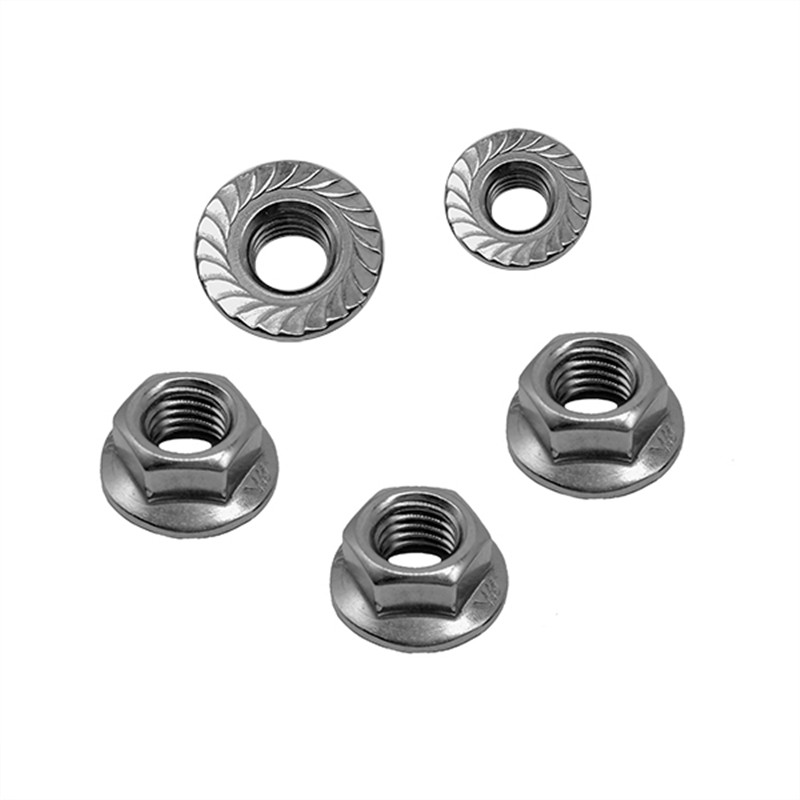
Further Reading & Industry References
To deepen your understanding of fastener technology and standards, we recommend consulting authoritative sources. Our commitment to expertise and trustworthiness is reflected in our adherence to the principles and data published by these leading organizations.
- ISO - International Organization for Standardization: The primary source for fastener standards like ISO 4161 (Hexagon nuts with flange) and ISO 898-2 (Mechanical properties of fasteners). View ISO 4161 Standard
- Fastener Technology International: A leading industry magazine offering insights into market trends, new technologies, and technical articles on fastener design and application. Visit Fastener Technology International
- Engineering ToolBox: A valuable online resource for engineers providing data, calculators, and standards for a wide range of mechanical components, including torque specifications. Explore Torque Resources
- American Society of Mechanical Engineers (ASME): Publishes key standards for imperial fasteners, such as ASME B18.2.2 which covers inch-series nuts, including the 1 2 13 flange nut and 5 16 24 flange nut. ASME B18.2.2 Information
Post time: Ago . 06, 2025 11:20


